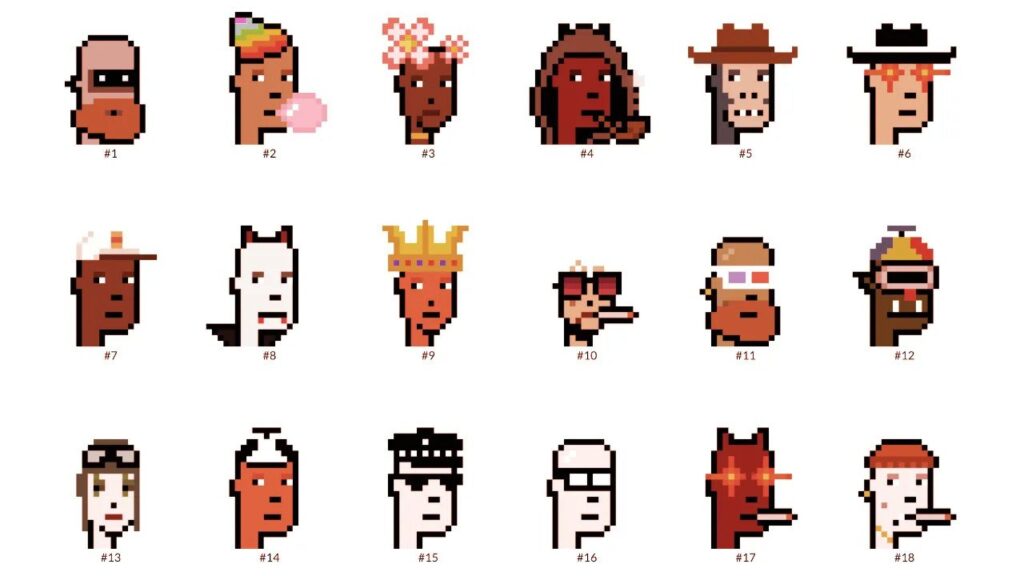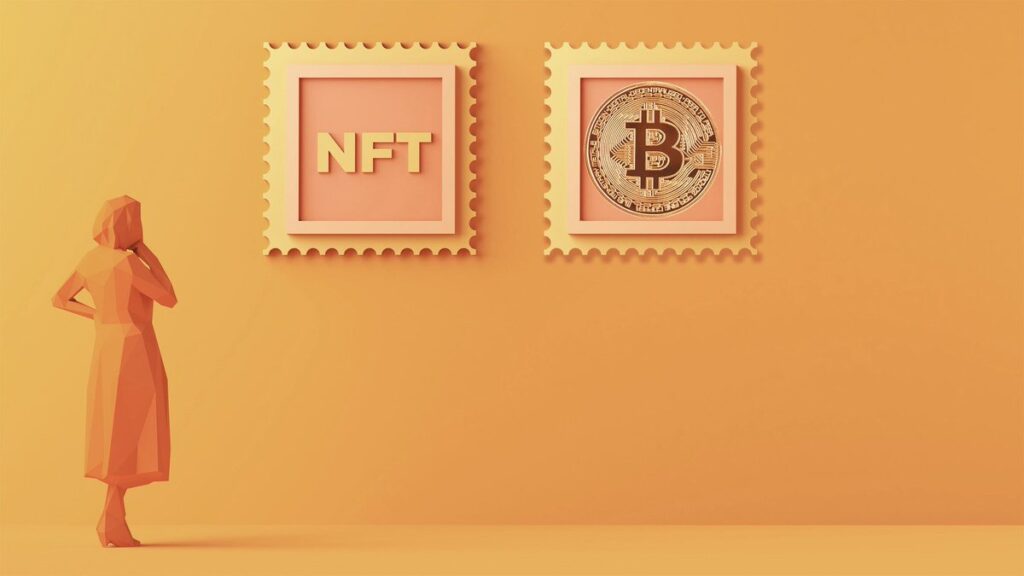Is the NFT era back? The boom with NFTs on the Bitcoin network blows up
The very first NFT project (the Cryptopunks consisted of 10,000 digital characters) was created in 2017.* Non-fungible tokens were glorified mainly in 2021 during the COVID era. Many people linked this trend with investment and evaluating their money, supporting their favorite artists, gamification, or the web 3 world. Trading with NFTs was such a trend that attracted the attention of not only passionate enthusiasts of technology but also of various fraudsters. You can love it or hate it. Nothing between seems to be possible. Anyway, after a shorter break NFTs are back. Now, it seems that NFTs have come back on the bitcoin blockchain.
*This source indicates that the very first NFT “Quantum” was created in May 2014 by Kevin McCoy and Anil Dash on blockchain Namecoin. According to Investopedia, it was minted and sold later on in 2021 on Ethereum.

Several basic information on NFTs
As the acronym NFT suggests, it is a non-fungible token that cannot be exchanged with another token. Various digital assets (images, videos, domains, music, digital clothing) are represented by this token and although 2 images may look identical, they are unmistakable thanks to the unique token (identification code). As there are many Mona Lisa replicas, just one piece is originally painted by DaVinci; as there can be many Davids of all sizes, Michelangelo sculpted just one single piece. Can you get it?
While cryptocurrencies are fungible, NFTs are not and can’t be replicated on a blockchain network. Non-fungible tokens are created through a process called “minting”, in which the information of the NFT is recorded on a blockchain. The process includes creating a new block, validating NFT information by a validator, and closing the block. Each token has an owner.
While Ethereum has become the dominant platform for NFTs, there are alternative blockchain platforms, including Solana, Binance Smart Chain, Polygon, and yes, also Bitcoin, that support NFTs. Since bitcoin is considered to be the oldest and most stable cryptocurrency, it is questionable whether it will not throw a shadow on the Ethereum network with its primacy in NFT projects as well, as I suppose there are many people who believe in bitcoin more than in Ethereum.

Bitcoin NFT Collection traded in millions
Over the past month, the most discussed topic was definitely the NFT collections on Bitcoin, especially the Ordinal Punks collection, whose inspiration is the ethereal collection CryptoPunks. The collection was created by Casey Rodamor on the Ordinals bitcoin protocol, which uses the latest network improvements focused on security and efficiency, the so-called Taproot upgrade. It also included a function to expand the block size beyond the standard limit of 1 MB, thus enabling the storage of jpegs and other similar digital formats. The Ordinal Punks bitcoin collection sold out last month and, like CryptoPunks, was created by an algorithm in the style of retro pixel art. All 650 Ordinal punks were created in late January 2023 and all of them were sold out within. By the end of the working week, on 9th February, the token with the number 620 even sold for 9.5 BTC ($215,800). However, some other pieces are also selling for units of BTC. So YEP, they’re doing great. By the way, all Ordinal Punk’s Data (Bids and Asks) are in this Sheet.

Gradually, other NFT projects are created on the Bitcoin blockchain network, e.g. Ordinal Birds, BitcoinShrooms, or Punks On Bitcoin.
What is it good for?
Proponents of Ordinals argue that bitcoin NFTs increase interest in Bitcoin, demand for block space, and support a healthy fee market. Supporters also point to the libertarian principles of the free market, in which the market determines how the blockchain network should be used. Last but not least, there is a new opportunity to fill the space of the secondary market. It is possible that a marketplace similar to OpenSea could be created, but focused on Bitcoin NFTs.
But the thing also has the other side of the coin. Some bitcoin maximalists argue that NFTs will degrade Bitcoin in this way. For example, Rene Pickhardt, a prominent Bitcoiner, blames the Ordinals for “spamming” the most dominant blockchain with oversized pictures.
Up until 7 February 2023, a crypto trading platform BitMex has identified over 13,000 Ordinals transactions, with 526 MB of Bitcoin block space usage and 6.77 BTC of Ordinals-related spend. This means that business transactions on that day barely exceeded 3%, but took up nearly 70% of the storage space on the blockchain network. That is not advantageous.
The other thing is that in the same way that NFTs on the Ethereum network attracted a lot of scammers, there will be a few people who will want to get dishonestly rich on bitcoin NFTs as well.
Bitcoin non-fungible tokens are stirring up a lot of controversies, but we’re probably not hearing about the NFT concept for the last time. History tends to repeat itself, and just as we’ve seen the ups and downs of Ethereum NFTs, the same may happen here. So let’s be surprised how this renaissance will move on.





